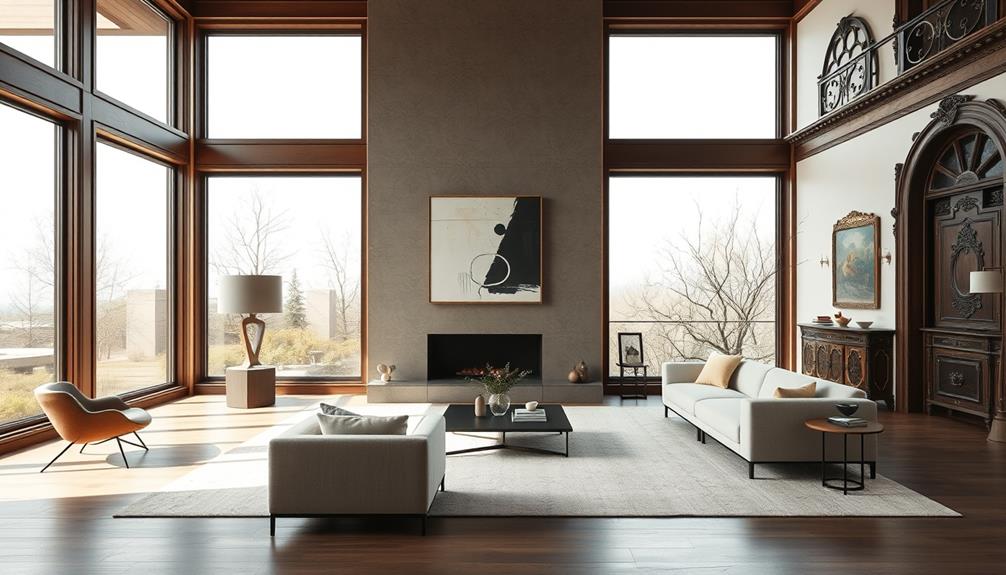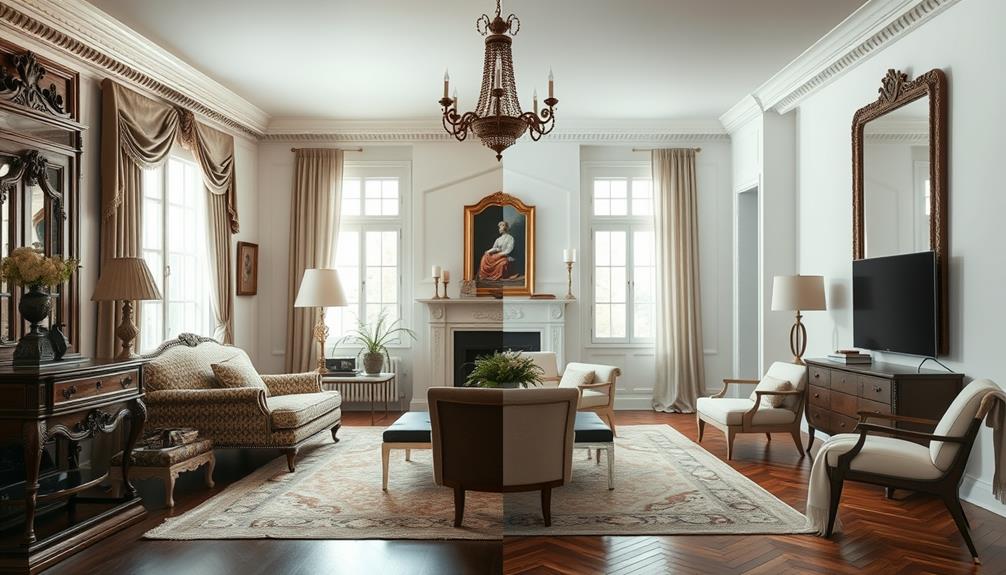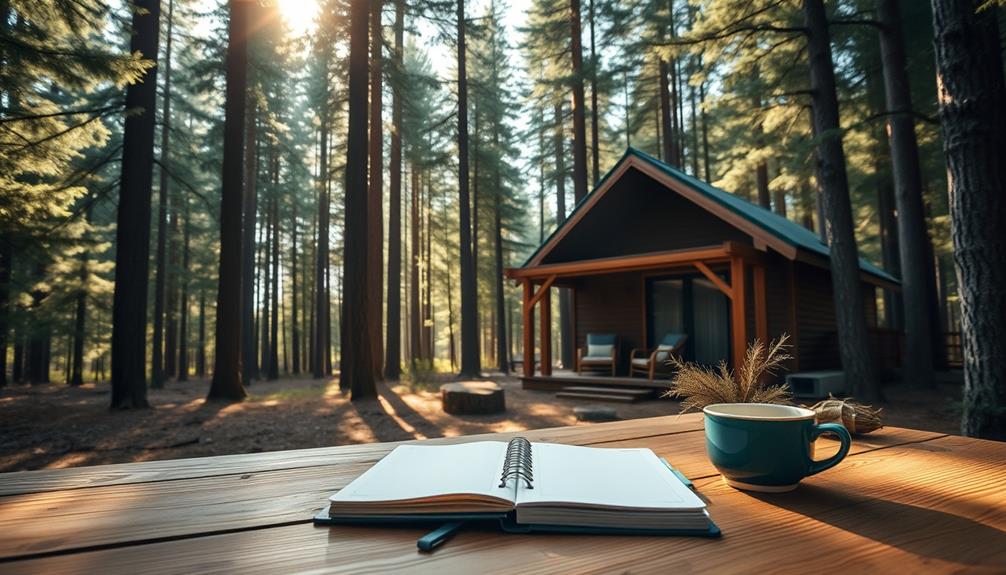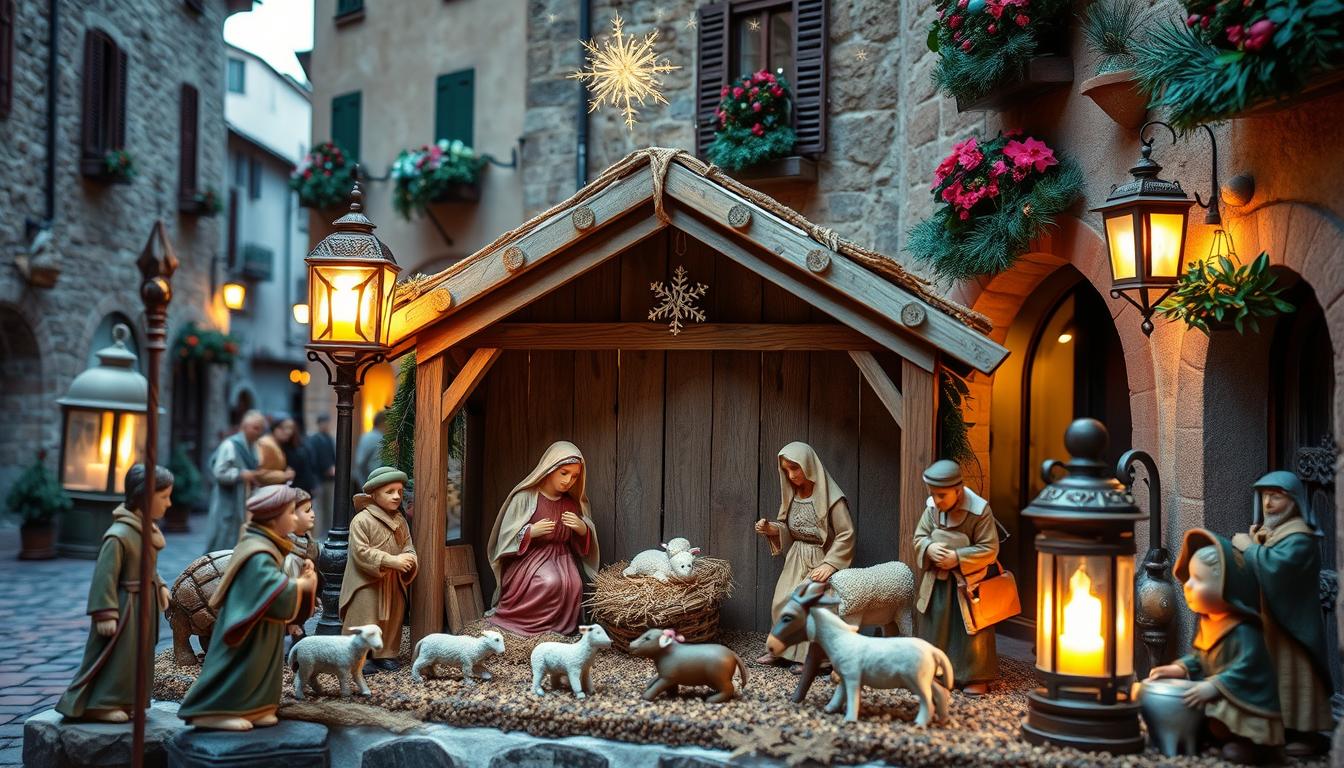When you consider traditional vs. contemporary design, you'll notice distinct styles shaping your space. Traditional design embraces ornate moldings, rich woods, and warm colors that create a cozy, elegant atmosphere. On the other hand, contemporary design highlights sleek lines, open spaces, and a minimalist approach, often using eco-friendly materials. While traditional design reflects historical influences and craftsmanship, contemporary styles embrace innovation and smart technology. Understanding these contrasts can help you choose a design that fits your personality and lifestyle. Stick around to explore how these styles can be blended for a unique twist in your home! With the evolution of design, we are seeing a shift towards a more eclectic approach that combines elements from both traditional and contemporary styles. This blend allows for a harmonious fusion of timeless elegance and modern simplicity, creating a truly unique and personalized space. By incorporating elements from both traditional and contemporary design, you can create a home that reflects your individual taste and captures the evolution of design in the 21st century.
Key Takeaways
- Traditional design emphasizes ornate details, rich woods, and warm color palettes, creating an opulent and comfortable atmosphere.
- Contemporary style favors minimalism with sleek lines, open spaces, and a neutral color scheme, promoting functionality and airiness.
- Modern design evolves from a blend of traditional and contemporary elements, incorporating eco-friendly innovations and smart technology for enhanced functionality.
- Current trends highlight the fusion of classic and modern aesthetics, encouraging experimentation with personal style while utilizing sustainable materials.
- Timeless aspects of traditional design, like craftsmanship and symmetry, contrast with contemporary's focus on geometric shapes and unembellished surfaces.
Overview of Traditional Design

In traditional design, you'll find an intricate blend of ornate moldings and rich woods that create an opulent atmosphere. This style wraps you in a warm color palette, enveloping spaces in comfort and elegance.
As you explore this aesthetic, you'll appreciate how personal influences shape individual design styles and contribute to the overall feel of a space. You'll notice how ornate moldings enhance grandeur, drawing your eye to the details that define each room.
Rich woods like mahogany, cherry, and walnut add both luxury and warmth, inviting you to savor the textures around you. Carefully curated elements guarantee a harmonious and cohesive aesthetic, making every corner feel intentional.
Plush fabrics introduce softness, balancing the sturdiness of the wood and moldings. Overall, traditional design embodies a classic elegance that stands the test of time, offering a sense of refinement and comfort in your living spaces.
Key Features of Contemporary Style

Contemporary style stands in stark contrast to traditional design, emphasizing a minimalist approach that prioritizes sleek lines and functionality.
You'll notice that open spaces and abundant natural light are essential, creating an airy atmosphere. This aligns with the current trend of using natural materials to enhance the modern aesthetic.
Color schemes typically revolve around blacks, whites, grays, and light neutrals, offering a serene backdrop for your decor. To add personality, don't shy away from bold pops of color that can invigorate a space.
Furniture often features geometric shapes and unembellished surfaces, enhancing the overall simplicity. Additionally, incorporating eco-friendly materials can seamlessly blend sustainability with aesthetics.
Evolution of Modern Design

The evolution of modern design showcases a fascinating blend of tradition and innovation, where technology plays a pivotal role in shaping aesthetics. You'll notice how contemporary design embraces eco-friendly innovations and smart home technology, enhancing both efficiency and convenience. Digital tools are now essential for visualization and prototyping, allowing designers to experiment with traditional elements in fresh ways.
| Feature | Traditional Design | Modern Design |
|---|---|---|
| Material | Rich woods | Sustainable materials |
| Aesthetic | Ornate details | Minimalist approach |
| Color Palette | Warm tones | Neutrals with pops |
| Functionality | Focus on decor | Emphasis on utility |
| Technology | Limited | Integrated smart tech |
This fusion creates a dynamic landscape of design choices today.
Timeless Aspects of Traditional Design

Traditional design stands out for its timeless aspects that continue to resonate in modern interiors.
You'll find that elements like intricate moldings and rich woods create an atmosphere of elegance and comfort. The warm color palette invites a sense of coziness, making spaces feel inviting. Classic features such as plush fabrics and ornate details elevate the overall aesthetic, showcasing craftsmanship and artistry.
Additionally, incorporating well-draining soil for indoor plants can enhance the ambiance by introducing natural elements, further enriching the space.
Symmetrical patterns provide a sense of balance and harmony, drawing the eye and pleasing the senses. These enduring characteristics not only reflect historical influences but also foster a sense of continuity in design.
When you embrace traditional elements, you're not just decorating; you're creating a legacy that celebrates the beauty of the past while enriching your contemporary living space.
Current Trends in Design

In today's fast-paced world, design trends are constantly evolving, reflecting a blend of modernism, minimalism, and influences from Art Deco.
You'll notice that contemporary spaces prioritize open layouts and natural light, creating an airy feel. Neutral color palettes dominate, but don't shy away from bold accents that inject personality into your environment.
Technology plays an essential role, from smart home features to eco-friendly materials, making your choices both functional and sustainable.
As you explore these trends, keep in mind the fusion of traditional elements with innovative designs. This creates a unique aesthetic that honors the past while embracing the future.
Stay open to experimentation and find what resonates with your personal style in this dynamic design landscape.
Frequently Asked Questions
What Are the Costs Associated With Traditional vs. Contemporary Design?
When considering costs, traditional design often involves higher expenses due to intricate details and rich materials. In contrast, contemporary design typically prioritizes simplicity and efficiency, which can lead to more budget-friendly options for you.
How Do Cultural Influences Affect Traditional and Contemporary Design Styles?
Cultural influences shape your design choices, blending history with modern aesthetics. As you explore styles, consider how traditions, local materials, and societal values inform your preferences, creating unique spaces that reflect your identity and experiences.
Can Traditional and Contemporary Styles Be Combined Effectively?
Like a dance between past and present, you can absolutely combine traditional and contemporary styles. Mixing ornate details with sleek lines creates a unique aesthetic, allowing you to enjoy the best of both worlds in your space.
What Maintenance Is Required for Traditional Versus Contemporary Decor?
Maintaining traditional decor often involves regular polishing of rich woods and cleaning ornate fabrics, while contemporary spaces require less upkeep, focusing on simple surfaces and occasional dusting. You'll find each style has its unique demands.
How Do Lighting Choices Differ in Traditional and Contemporary Designs?
When you step into a room, lighting dances like a conductor guiding an orchestra. In traditional designs, warm, layered fixtures create cozy ambience, while contemporary opts for sleek, minimalistic designs that spotlight simplicity and functionality.
Conclusion
As you navigate the world of interior design, think of traditional and contemporary styles as two dancers, each with their own rhythm and grace. Embracing elements from both can create a harmonious space that reflects your unique personality. Whether you lean towards the rich textures of tradition or the sleek lines of modernity, remember that blending these styles can transform your home into a vibrant tapestry of comfort and style. Let your design choices tell your story.










